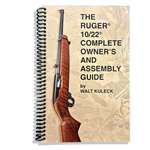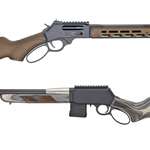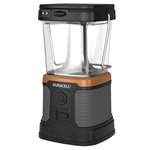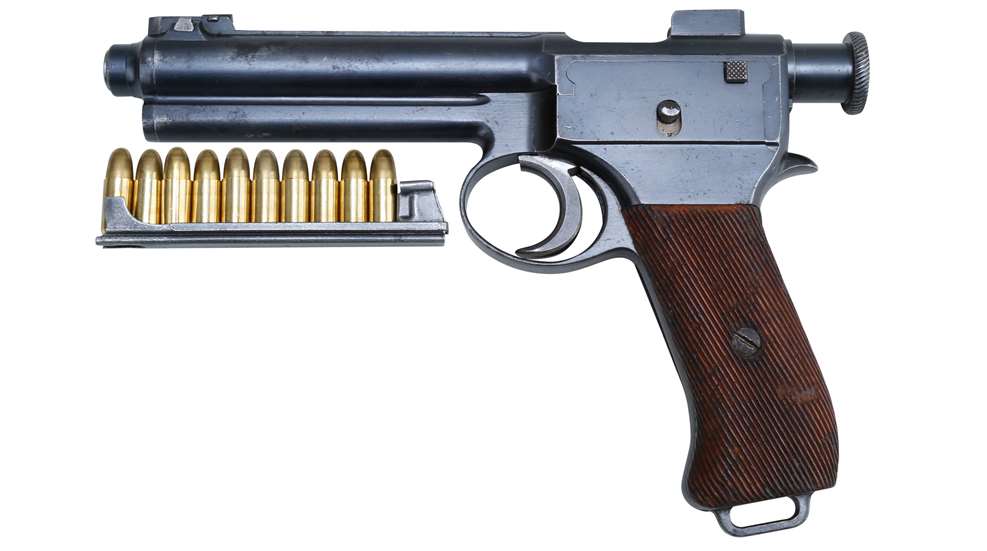
Though Switzerland broke the ice by choosing the semi-automatic German Parabellum as its official sidearm as early as 1900, the accolade for the first major military power to adopt a self-loading handgun goes to Austria-Hungary and the Roth-Steyr Model 1907.
Unlike the Luger, which is one of the world’s most recognizable and widely dispersed semi-automatics ever, the M1907 Roth-Steyr, though a worthy repeater, has sunk into relative obscurity, primarily only recognized by devoted collectors and enthusiasts of early martial handguns. Additionally, the fact that 8 mm Steyr ammunition is difficult to come by and that the pistol has an unorthodox loading arrangement relegates it to being a non-starter with most shooters.
At the time of its premier, however, the Roth-Steyr was highly regarded and considered something of a wonder—persevering through two world wars, despite being eclipsed by simpler, more efficient designs.
Though the pistol includes the armsmaker Steyr’s name in its popular designation, that respected Austrian firm had little to do with its development. It was really devised by Czech inventor Karel Krnka, an employee of the Georg Roth Actien-Gesellschaft ammunition company.
During the Austro-Hungarian handgun trials of 1906, a perfected version of the Roth-Krnka emerged triumphant and was duly accepted by Emperor Franz Josef’s cavalry as the Repeteirpistole M.7. (Repeating Pistol Model 1907).
The M1907 was a sturdy piece of hardware that stressed safety over facility with its slow, heavy, almost-double-action-style trigger. This factor was appreciated by the Austro-Hungarian military, which felt the triggers on cavalry arms should not be too light or responsive, as a trooper on horseback had enough to deal with managing his mount and equipment without having to worry about a sidearm that might be discharged accidentally.
The cartridge designed for the 1907 Roth-Steyr was a proprietary 8x18 mm straight, rimless round that pushed its 116-grain jacketed bullet out at 1,088 f.p.s., producing a muzzle energy of some 305 ft.-lbs.—not exactly a barn-burner, but effective enough, especially when compared with many other handgun chamberings of the period.
The M1907’s 10-round magazine was fixed and contained within the butt (though it can be removed if pistol is disassembled). An intricate clip with a sliding thumbpiece was required to load the gun. Today these clips are actually scarcer than the pistols themselves and often sell in the $200 range (when one can be found). To remove cartridges from the magazine without operating the slide, one has to simply push down on a knurled button sited on the left side of the frame, which causes the remaining rounds to eject into the surrounding environs.
Though initially intended for cavalry use, 1907 Roth-Steyrs were eventually issued to other units, including infantry and artillery. An inset disc on the gun’s right stock panel identified the unit to which it was issued. The disc in the example shown here displays the initials “FKR” (Fieldkanonartillerie Regiment—Field Artillery).
Model 1907s were manufactured at two sites—Oesterrichische Waffenfabrik Gesellschaft in Steyr, Austria, and Fegyver és Gépgyár (FEG) of Budapest, Hungary—the former producing some 60,000 and the latter 30,000. Quality of workmanship on guns from both factories was superb. Those pistols made in Austria are marked on some parts with a “K” and Hungarian versions with an “R.”
Model 1907s saw considerable use with Austro-Hungarian forces in the years preceding and during World War I and also in dwindling numbers with military and police in the years following. Additionally, the guns were fielded by Italy and in Eastern European nations such as Poland, Czechoslovakia and Yugoslavia.
Though fascinating arms, Roth-Steyr M1907s have not ascended to the upper echelons of desirability among collectors, thus a pretty decent specimen, such as the one seen here in NRA Very Good (Modern Gun Standards) condition, would sell for $1,450.
—Garry James, Field Editor
Gun: Roth-Steyr M1907
Manufacturer: Oesterrichische Waffenfabrik Gesellschaft, (Austria)
Chambering: 8 mm Roth-Steyr
Manufactured: c. 1916
Condition: NRA Very Good (Modern Gun Standards)
Value: $1,450















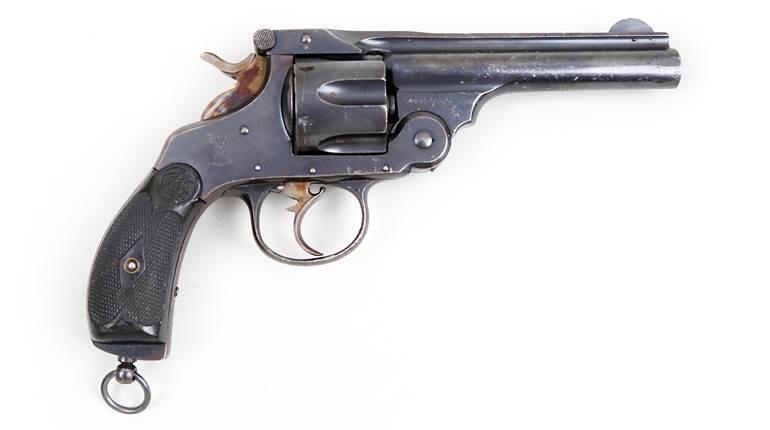



![Auto[47]](/media/121jogez/auto-47.jpg?anchor=center&mode=crop&width=770&height=430&rnd=134090788010670000&quality=60)
![Auto[47]](/media/121jogez/auto-47.jpg?anchor=center&mode=crop&width=150&height=150&rnd=134090788010670000&quality=60)

